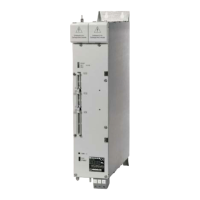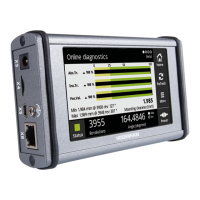6.42 Operating mode “Transfer blockwise”
Very long programs (e. g. for moulds), which are normally compiled on an external computer, can be read into
the TNC 151/TNC 155 via the RS-232-C (V.24) data interface block-by-block, and executed simultaneously.
Computers with bulk memories or the HEIDENHAIN Floppy Disc unit FE 401 may be used. A multitasking
system is recommended, so that the computer can perform other tasks whilst being linked to one or more
TNC 155-units.
The host coimputer generally requires a special purpose software for transmission of data to and from the
TNC 151/TNC 155.
6.421 “Transfer blockwise” using the HEIDENHAIN Floppy disc unit FE 401
When in the FE-mode, the RS-232-C (V.24)-interface is automatically adapted to the FE 401, regardless of
the machine parameters which have been programmed. Mode selection is initiated by the MOD-function
(MOD-key and ENT-key).
6.422 Tralnsfer blockwise via EXT-mode
TNC 151/TNC 155 is connected to the external computer via the RS-232-C (V.24) data interface in the
operating mode “EXT”. Control characters for computer link-up are specified by machine parameters.
Data transmission can be started from the TNC 151/TNC 155. After starting, the control transmits a heading
block to the external computer. This heading block contains the program number and information specifying
whether transmission is to be from the computer to the control or vice-versa. Transmission of this heading
block is followed by the machining program.
Each block, which has been transferred, is checked by a “block check character BCC”. This is an important
check procedure of the “transfer blockwise” mode, since there are no further checks of the machining program
possible between data transmission and program execution.
If a transmitted program block has been recognized as error-free, the next block is called up. An erroneous block
has to be re-transmitted.
Transferred blocks are read into a buffer memory in the TNC 151 /TNC 155, and can be executed from this
memory. During program run, the executed blocks are deleted and new blocks are read into the memory.
Continous contouring operation, without interruptions is therefore possible.
60

